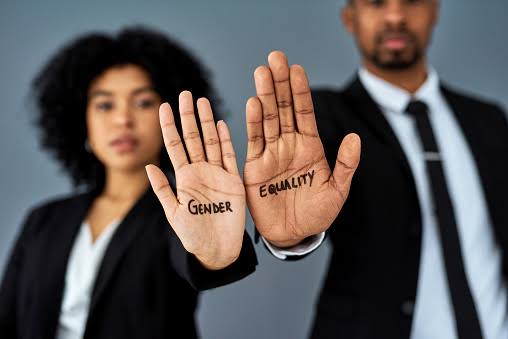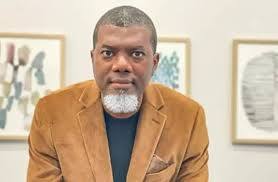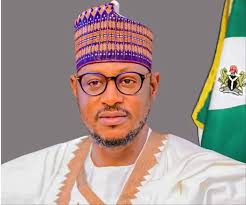At the heart of many NGOs working in Nigeria’s education sector lies the issue of girl – child education. This might not be unconnected with the way girls face myriad of challenges in accessing education in Nigeria, particularly in Borno, Adamawa and Yobe States, where Centre for Advocacy, Transparency and Accountability Initiative, CATAI, said the situation is worrisome.
According to CATAI, the three states have the highest number of out of school children especially girls. The organization noted that many girls do not have access to education after a certain age due to insecurity, imminent poverty and poor funding of education by relevant authorities at national, state and local government levels.
State of Education in Adamawa State:
The Adamawa State Education Sector Operational Plan (SESOP) 2024-2026 reports that Boko Haram insurgency has affected the state resulting in the deaths, destruction of schools, increased in Out-of – school children (OOSC) and low socio-economic activities.
The UN population projections for 2018 revealed that there are about 688,800 children aged 6-17 who were out of school in 2018. Out of these numbers, 604,800 (or 88%) have never attended school; 231,900 (or 34%) of which are in the junior and senior secondary age groups.
The Education Sector Operational Plan added, “There is generally more male enrollment than female from pre- primary and JSS with gender parities of 0.94, and 0.91, 0.87, and 0.97, and 0.99 respectively for private and public schools combined.
The total enrollment (public and private) of male pupils in pre-primary education (59,822) is higher than that of their female counterparts (56,608). Gross Enrollment Rate (GER), for girls (27.0%) is slightly lower than for boys (27.5%). At the basic and secondary education levels, there is a decreasing rate of access by male and female in Adamawa state in 2018.
The highest female enrollment (83.3%) was in primary one. It decreased consistently from level to level to 62.9% in primary six. Boys’ enrollment also decreased from 85.0% in primary one to 66.5% in primary six. Enrollments at both junior and senior secondary levels were not impressive – 40% on the average”.
An analysis on the Adamawa State education sector jointly conducted by UNESCO and World Bank and published in 2021 indicates that 51% of girls between 12-15 years never attended school while 62.5% are out of school.
Challenges Facing Girl – Child Education in Adamawa State:
In Adamawa state, Mr. Joel Jutum, UNICEF education consultant in the state, said “There are a handful of challenges that girls face in Adamawa state, particularly challenges from cultural and societal norms that put girls in a disadvantaged position when it comes to accessing education”.
Jutum also noted that there is an issue of early marriage, which is very rampant among communities with poor economic background. Misconceived religious belief is another challenge, according to him.
The inherent traditional societal values placed on the boy-child over the girl-child is another significant obstacle Nigerian girl-child faces in accessing education, according to CATAI.
A report of a needs assessment conducted by Connected Development (CODE) in Adamawa state identified infrastructure deficit, inadequate teaching and learning resources, inadequate Water, Sanitation and Hygiene (WASH) facilities, vulnerability to security threats, perception issues, poverty and overall poor quality of teaching as key reasons for low levels of enrollment and completion of secondary school education for the girl-child.
In the 2019 Joint Educational Need Assessment (JENA) report, parents have attributed non-enrollment and retention of girls in secondary school to lack of quality education characterized by lack of infrastructure and prevalent social norms which posits that irrespective of the level of education given to the girl-child, it would end up in the kitchen.
Therefore, the parents prefer to send school age girls to hawk and support in income generating activities which serve as immediate gains for their families before girls are eventually married off at a young age.
Without being told, these and other factors are enough to bring a setback to girl child education in the state. Education experts and advocates are now suggesting ways of addressing the challenges facing girl child education in the country, with many of them advocating for mainstreaming gender into the Education Sector Plan.
It is believed that Gender Responsive Education Sector Planning (GRESP) is crucial for addressing obstacles that hinder girls from accessing quality education.
However, many states, including Adamawa, lack GRESP, failing to address girls’ educational needs.
In Adamawa State, the Medium Term Sector Strategy (MTSS) for 2023-2025, which covers education, water, sanitation, and hygiene (WASH), plans to enhance student-teacher ratio by investing in teacher recruitment and salaries, increase school enrollment from 86% to 95%, repair dilapidated schools and distribute sports and WASH facilities, ensure all children attain basic education by 2025, provide essential textbooks and improve adult literacy and numeracy rates past 75%, among others.
Although the MTSS appears great, it overlooks gender issues, rendering it gender-blind.
In contrast, the State Education Sector Operational Plan (SESOP) for 2024-2026 addresses some gender concerns, by outlining plans to hire more female teachers, offer incentives for female teachers to work in rural areas, procure and distribute quality gender-responsive educational materials.
Unfortunately, SESOP faces funding and implementation challenges, hindering the realization of its provisions.
Interestingly, Adamawa State Commissioner for Education and Human Capital Development, Dr. Garba Umar, told this reporter that the state government is developing a new education sector plan, which will be gender responsive. It is expected to be launched by the end of 2024.
Gender Analysis:
As the Adamawa state ministry of education moves to come up with a new sector plan, which is Gender Responsive, Education experts and advocates are advising it to conduct Gender Analysis before drafting the plan.
According to Mohammed Bello of the African Centre for Innovative Research and Development and Dr. Hassana Shu’aibu of ACE Charity Foundation, the gender analysis will help the government identify the challenges girls and boys face in the education sector.
Dr. Hassana says, “Gender analysis should be conducted to find out what are the barriers that boys and girls face regarding school enrollment, retention, and completion. What are some of the gender norms that can affect education. They are also supposed to find out the root causes of gender barriers.
“The state will need to identify the gender gaps within the operational sector plan. For example, you need to understand what are the specific challenges that are faced by girls and boys in the education sector – looking at pre-primary, primary, secondary education.
That will show the kind of data disparity in enrollment, the attendance even the likely outcome and completion rates. That particular gender analysis component needs to also feature in the education sector operational plan.
So, if a state is able to put in place the gender analysis that showcases disparities in education between the boys and girls looking at the enrollment, retention, completion and learning outcome rates, then it will be easy for the state to understand where the challenges that need to be addressed are, particularly in terms of responding to gender needs within the education sector plan”, Mohammed Bello said.
Engagement of Stakeholders/NGOs:
Just like other critical sectors, the education sector is not managed by the government alone as there are many stakeholders that complement its effort.
To this end, the education experts stressed the need for engaging various MDAs and other stakeholders including community and religious leaders, teachers’ unions, community based organizations, NGOs, PTA and SBMC in the development of the plan.
Mohamed Bello explains “The community stakeholders need to be involved in the design of the plan so that they are able to take ownership of the plan. And when it is gradually being implemented, they can also contribute to ensure full implementation of the operational plan. But, when they are not involved, the document comes to them as something new and they don’t feel part of it and it becomes very difficult for them to cooperate into the system.
In developing the plan, Dr. Hassana said the voices of women, boys, girls, female and male teachers should also be considered, so that it can fully reflect the needs of the populace, especially the boys and girls.
“It shouldn’t be a situation where someone somewhere just developed the plan or the former plan will just be brought and edited. It has to be that there is participation from all these relevant stakeholders mentioned”, she explained.
Recommendations:
The Adamawa State Ministry of Education’s decision to integrate gender into its education sector plan has thrilled education experts and advocates. Therefore, they recommend that the ministry include the following issues in the plan to ensure Gender-Responsive Education Sector Planning, GRESP.
According to Mr. Joel Jutum, Dr. Hassana Shu’aibu and Mr. Mohamed Bello, everything to be captured in the plan such as Budget, Curriculum, Teacher Recruitment and Deployment, WASH facilities, Enrollment among others should be gender specific.
Budget:
Budget is central to the successful implementation of the sector plan, and most at times, the government just makes a blanket budget without specifying what is allocated to gender issues.
To avoid genderless budget, Mr. Bello advises the government to have a deliberate plan that takes care of the girl child initiative in the state.
“While developing the education sector plan, it is very important that the budgeting aspect of the education service provision within the state to be gender responsive”, he added.
The experts noted that a comprehensive plan requires a corresponding budget. They added that it is essential to assign specific costs to each strategy outlined, ensuring a realistic implementation framework.
“It is not just about budgeting; it is about release as well. It could be budgeted for, but the money is not released. If the money is not released, nothing can happen”, Dr Hassana pointed out.
Curriculum:
Given the critical role of curriculum in fostering inclusive education and critical thinking, Mr. Bello said the plan should have a gender responsive curriculum.
He said “Don’t use a curriculum that encourages the use of materials and books that portray a male child as a doctor and a female as working in the kitchen. So, those kinds of stereotypes need to be also addressed carefully within the curriculum”.
Gender Responsive Recruitment and Training:
The experts recommended that the plan should specify percentage for women during recruitment.
Dr. Hassana and Mr. Jutum pointed out that the plan should encourage the employment of more female teachers, saying where there are more female teachers, girls tend to stay in school the more, and that they see those ones as their role models. In view of how some female teachers reject posting to rural areas because their husbands are in the urban areas, the experts suggested that the plan should make provision for sponsoring women’s education and posting them back to their communities after the training.
To create a gender-inclusive learning environment, the expert recommended that the plan should make provision for providing teachers with specialized training that goes beyond regular professional development.
According to her, the training should focus on recognizing and eliminating gender stereotypes that can perpetuate bias and discrimination in the classroom.
Dr. Hassana said “Sometimes you will see teachers mocking boys who are outperformed by girls, saying, “How can a girl do better than you?” or “Why didn’t you score higher than her?”
Mr. Bello recommended the appointment of more women to manage schools, saying “It will be very important that the government ensures management and leadership of these schools also wear a gender lens. For instance, you will need guidance and counseling, especially for adolescent girls. The guidance and counselors should also be females, where the need arises so that these girls can feel comfortable and safe to share their issues and get counseled appropriately.
Detailed and Intentional:
“What I’m saying basically is that, in developing a gender responsive policy, every statement in the policy document should be intentional, detailed and should have quantity in terms of numbers and should also be clear about the scope. If you are employing 2,000 teachers in Adamawa state, let the policy say for every employment that will take place, at least 40% should be female. But if we say, both female and male teachers, we can get 3 female and 1, 997 males”, Mr. Jutum said.
WASH and Menstrual Hygiene Facilities Allocation:
The experts recommend that the plan includes provisions for WASH facilities and menstrual hygiene facilities in schools to address girls’ absenteeism during their menstrual cycles. Mr. Jutum emphasizes the importance of specificity in planning, saying, “We need to allocate facilities separately for boys and girls, specifying numbers, such as 10 toilets for boys and 10 for girls. This will ensure clear budgeting for these activities.”
Dr. Hassana suggests incorporating pad banks in schools to tackle the issue of girls missing classes due to lack of menstrual hygiene facilities.
Gender-Specific Enrollment:
When it comes to enrollment, the experts recommend that the plan should be gender specific, specifying the number of girls and boys to be enrolled. For instance, the plan could aim to enroll at least 55% girls and 45% boys in primary education, or 55% girls and 60% boys in secondary education. This approach according to them ensures that both genders have equal opportunities to access education.
Strategies for Effective Free Education:
Despite the Adamawa’s free education policy, parents still pay for expenses like PTA levies, books, uniforms, transports, and even tools like hoes and cutlasses. “By the time you calculate everything, it is about twenty something thousand just to go to school and it is not boarding school”, Dr. Hassana said.
To address this issue, she recommends incorporating key strategies for effective free education into the gender-responsive plan to provide adequate infrastructure, textbooks and educational materials, reduce additional costs (minimize extra fees for items like uniforms, PTA levies, and tools), and offer financial assistance to vulnerable students, especially girls to promote equal access to education.
Addressing Safety Concerns and Gender Based Violence:
Dr. Hassana recalled her conversation with some girls in Adamawa, where they told her how shilla boys would enter classes, take their bags, and harass them, considering them weak.
(In Adamawa state, “Shilla” refers to young people engaged in illicit/criminal activities).
She advocated the inclusion of security measures in the plan to protect girls against any attack and sexual and gender based violence.
Second Chance Education:
Second-chance education is also crucial in Adamawa State, particularly for married and pregnant girls, according to Dr. Hassana. She said she has engaged with community leaders, and they often say that once a girl is married, education is no longer a priority. However, the expert believes that second-chance education can provide a lifeline for these girls.
Dr. Hassana recommended that second-chance education programs be designed specifically for married women and pregnant teenagers, with classes held in the morning, not afternoon.
This, according to her, would enable the married ones to attend school without conflicting with their domestic responsibilities.
The experts also recommend that the plan should provide for strategic positions for women in the state ministry of education and other relevant MDAs, capacity building for staff implementing the plan, engagement with community leaders, and strategies to address gender barriers identified in the gender analysis.
Female Students’ Recommendations:
The female students’ voices are crucial in shaping the education sector plan, and their suggestions should be taken seriously. As such, this reporter interviewed some students of Government Senior Secondary School Mayo Belwa, Government Girls Secondary School Mayo Belwa, and Government Girls Day Secondary School Ganye on their recommendations.
Zainab, Ikilima, Deborah, Blessing, Naja’atu, and Eve (Not real names) suggested that the plan should make provision for teacher training, improved infrastructure, essential services (power, adequate water supply, and sanitation facilities) safety and well-being, counseling services, and ensure availability of first aid supplies and sanitary pads.
Implementation, Monitoring and Evaluation.
Beyond developing the plan, experts said implementation, monitoring and evaluation matters. They, therefore, tasked those responsible to ensure effective implementation of the plan.
Mr. Joel Jutum says, “Educational plans can be beautifully crafted yet the implementation becomes an issue. We have had these severally having to do with gender responsive and crisis sensitive education plans and all that and all that, but when it comes to the implementation, we still don’t see it being implemented according to the thinking of the drafters of the policy document.
So, what I think needs to be done is to be intentional about it. If we are very intentional and detailed about those plans, then implementation can also be tracked to ensure that it takes place, otherwise, just making the policy as normal document and say okay, for boys or for girls or for all children is not just enough”.
After the plan has been produced, there has to be an operational plan to guide the implementation process, according to Dr. Hassana. She also emphasized the training of monitoring and evaluation officers from all relevant MDAs, to ensure effective monitoring of the implementation process.
The expert stressed the importance of hiring experts to train those that will implement the second chance education policy, to ensure that it achieves the set target.
Above all, Dr. Hassana emphasized the need for political will, timely release of funds, transparency and accountability mechanisms to track how the money is being spent.
Mr. Bello advised the government to collaborate with relevant stakeholders, including NGOs and community organizations to ensure that all the gender issues captured in the plan are well implemented.
“When you are talking about implementation and you are not collaborating with stakeholders especially in Adamawa state where education is taking place in emergency areas – areas affected by disasters and insurgency you may not succeed.
Those kind of places if there’s no adequate collaboration between the government and development partners, NGOs and CSOs working in those areas to ensure learning never stops, it will be very difficult to ensure the implementation of the gender responsiveness of the education sector plan”.
To ensure effective implementation of the initiatives aimed at mainstreaming gender into the education sector plan, Mr. Bello says, robust monitoring and evaluation frameworks must be put in place.
These frameworks, he said, will enable the routine collection of data to track progress, identify areas for improvement, and assess the impact of these initiatives on addressing gender needs in the state.
Mr. Bello noted that failing to track the implementation of these initiatives, government risks not understanding their effectiveness in addressing gender disparities in education and assessing the impact of the initiatives on gender issues.
This report was published with collaborative support from ImpactHouse Centre for Development Communication and System Strategy and Policy Lab (SSPL).





























